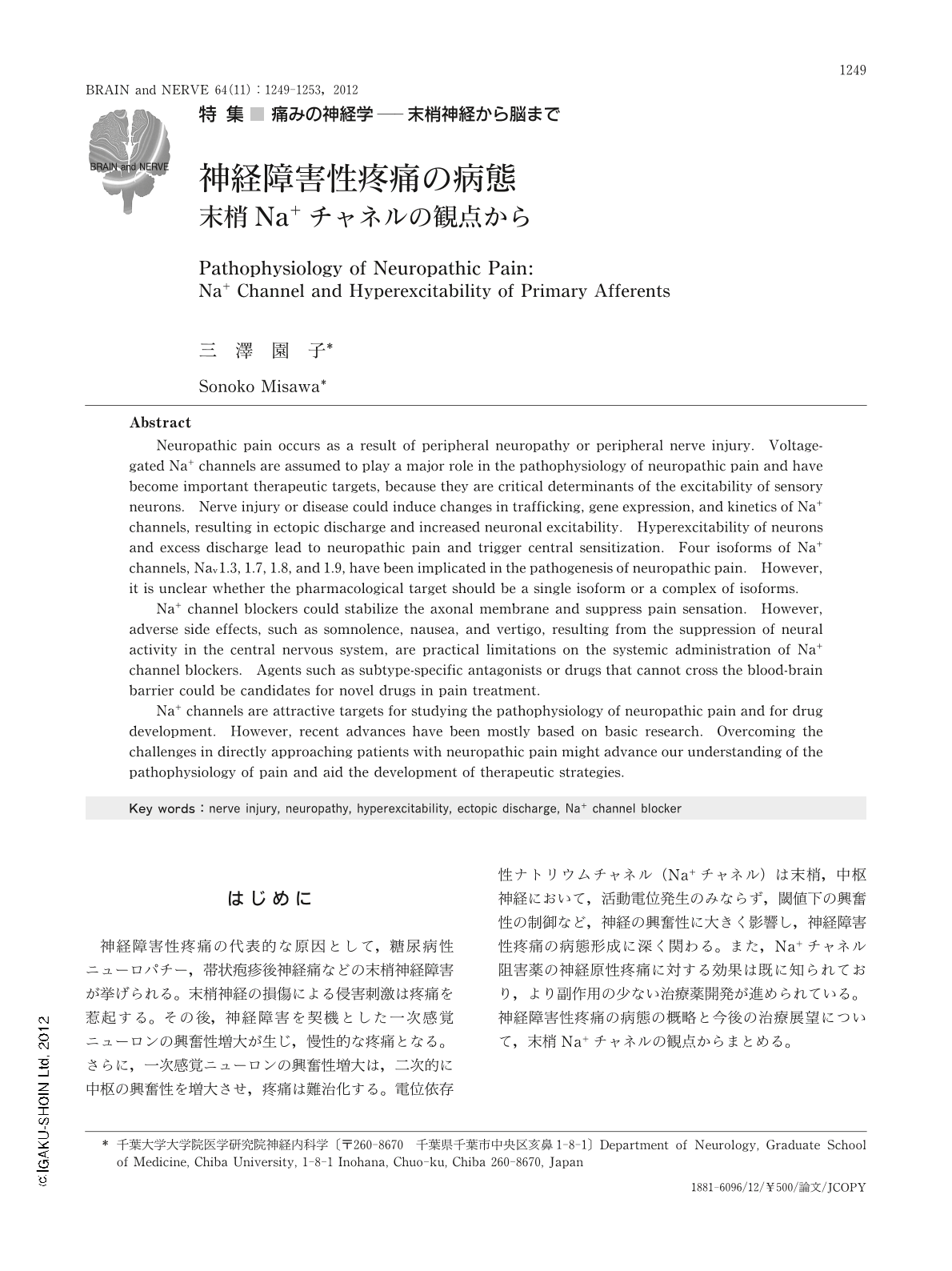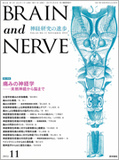Japanese
English
- 有料閲覧
- Abstract 文献概要
- 1ページ目 Look Inside
- 参考文献 Reference
はじめに
神経障害性疼痛の代表的な原因として,糖尿病性ニューロパチー,帯状疱疹後神経痛などの末梢神経障害が挙げられる。末梢神経の損傷による侵害刺激は疼痛を惹起する。その後,神経障害を契機とした一次感覚ニューロンの興奮性増大が生じ,慢性的な疼痛となる。さらに,一次感覚ニューロンの興奮性増大は,二次的に中枢の興奮性を増大させ,疼痛は難治化する。電位依存性ナトリウムチャネル(Na+チャネル)は末梢,中枢神経において,活動電位発生のみならず,閾値下の興奮性の制御など,神経の興奮性に大きく影響し,神経障害性疼痛の病態形成に深く関わる。また,Na+チャネル阻害薬の神経原性疼痛に対する効果は既に知られており,より副作用の少ない治療薬開発が進められている。神経障害性疼痛の病態の概略と今後の治療展望について,末梢Na+チャネルの観点からまとめる。
Abstract
Neuropathic pain occurs as a result of peripheral neuropathy or peripheral nerve injury. Voltage-gated Na+ channels are assumed to play a major role in the pathophysiology of neuropathic pain and have become important therapeutic targets, because they are critical determinants of the excitability of sensory neurons. Nerve injury or disease could induce changes in trafficking, gene expression, and kinetics of Na+ channels, resulting in ectopic discharge and increased neuronal excitability. Hyperexcitability of neurons and excess discharge lead to neuropathic pain and trigger central sensitization. Four isoforms of Na+ channels, Nav1.3, 1.7, 1.8, and 1.9, have been implicated in the pathogenesis of neuropathic pain. However, it is unclear whether the pharmacological target should be a single isoform or a complex of isoforms. Na+ channel blockers could stabilize the axonal membrane and suppress pain sensation. However, adverse side effects, such as somnolence, nausea, and vertigo, resulting from the suppression of neural activity in the central nervous system, are practical limitations on the systemic administration of Na+ channel blockers. Agents such as subtype-specific antagonists or drugs that cannot cross the blood-brain barrier could be candidates for novel drugs in pain treatment. Na+ channels are attractive targets for studying the pathophysiology of neuropathic pain and for drug development. However, recent advances have been mostly based on basic research. Overcoming the challenges in directly approaching patients with neuropathic pain might advance our understanding of the pathophysiology of pain and aid the development of therapeutic strategies.

Copyright © 2012, Igaku-Shoin Ltd. All rights reserved.


